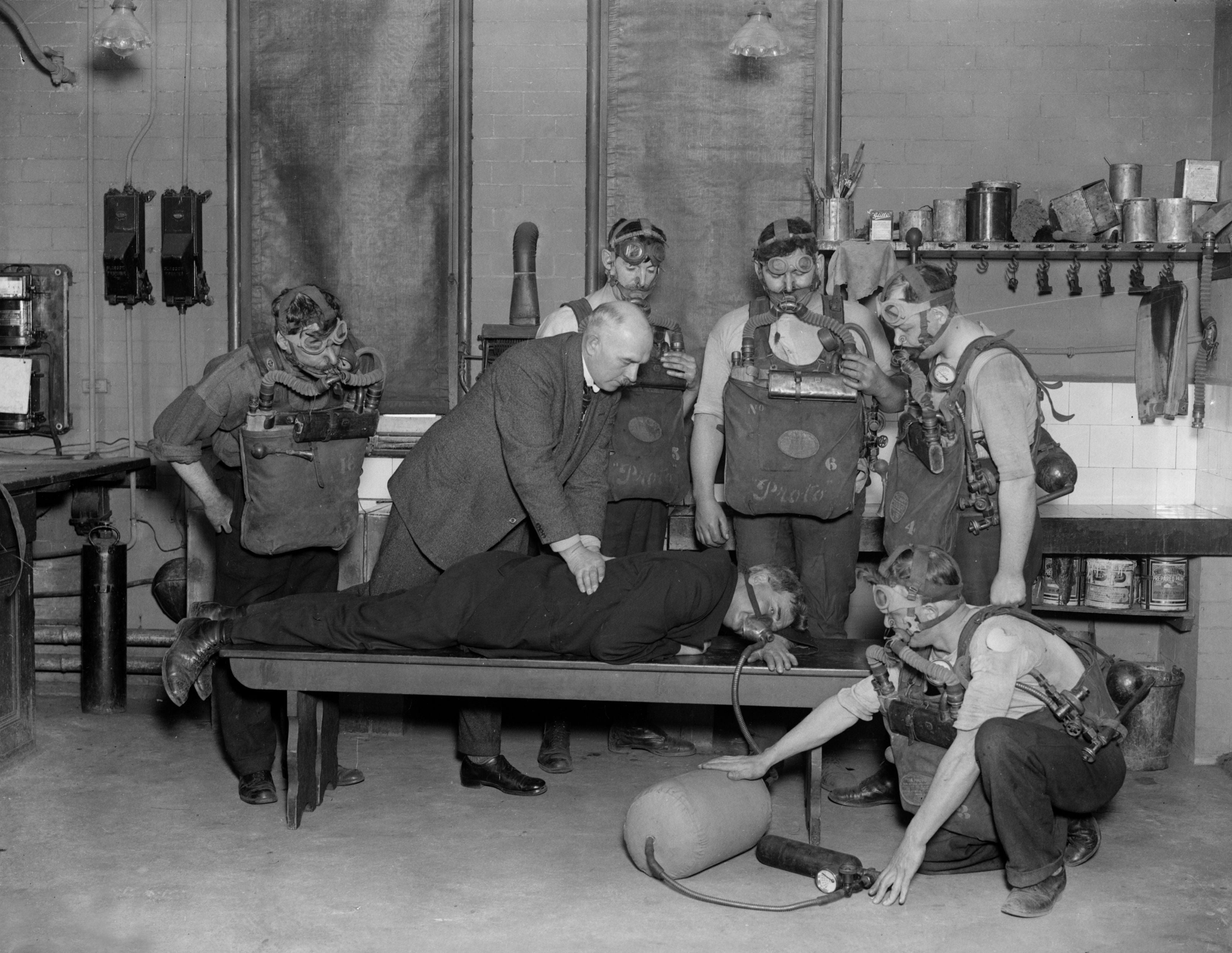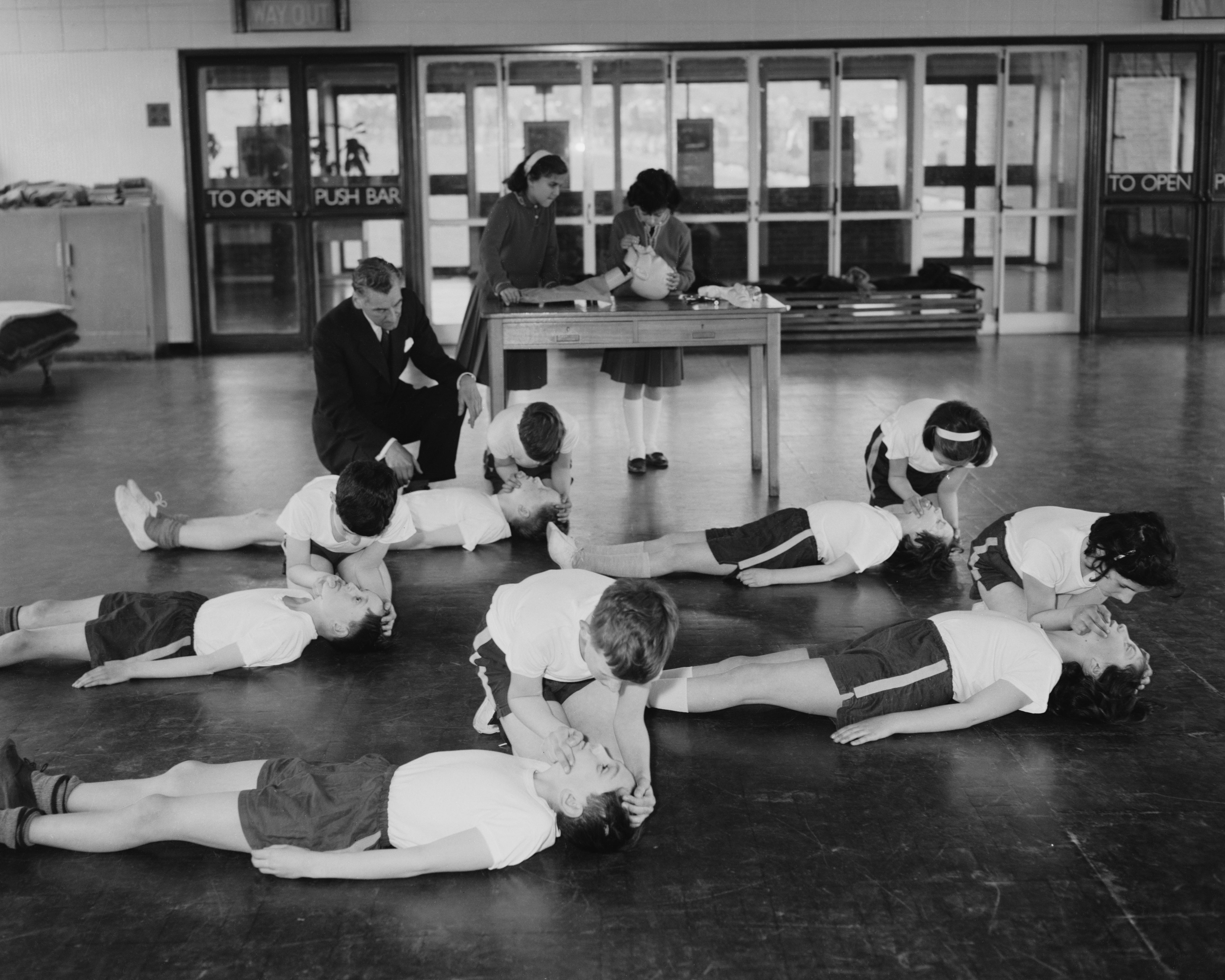The bizarre history of resuscitation
We’ve all seen CPR taking place, even if it’s just in the movies and on TV, but the history of how we got to chest compressing is quite bizarre, writes Caitjan Gainty

Your support helps us to tell the story
From reproductive rights to climate change to Big Tech, The Independent is on the ground when the story is developing. Whether it's investigating the financials of Elon Musk's pro-Trump PAC or producing our latest documentary, 'The A Word', which shines a light on the American women fighting for reproductive rights, we know how important it is to parse out the facts from the messaging.
At such a critical moment in US history, we need reporters on the ground. Your donation allows us to keep sending journalists to speak to both sides of the story.
The Independent is trusted by Americans across the entire political spectrum. And unlike many other quality news outlets, we choose not to lock Americans out of our reporting and analysis with paywalls. We believe quality journalism should be available to everyone, paid for by those who can afford it.
Your support makes all the difference.Most of us probably know – more or less – how to resuscitate one of our fellow human beings. Even if you haven’t taken a course in cardiopulmonary resuscitation (CPR), you’ve probably seen the technique many times on television or in the movies.
The early history of resuscitation was in many ways also the stuff of drama. On June 1, 1782, for example, a Philadelphia newspaper carried news of the latest resuscitative miracle: a five-year-old child had been restored to life after drowning in the Delaware River.
Little Rowland Oliver was playing on one of the busy wharves that industrialisation had brought to the Delaware’s banks when he tumbled into the water. He struggled for 10 minutes, then went limp. Finally, a worker fished him out and carried him home.
Although Rowland was delivered lifeless to his family, the paper reported that his parents recognised he was only “apparently dead”. This energised them into action. They “stripped off all his clothes immediately, slapped him with their hands” and “rubbed him with woollen cloths dipped in spirits”.
The doctor who arrived shortly afterwards did more of the same. They also immersed Rowland’s feet in hot water and thrust an emetic agent down his throat. After about 20 minutes, life returned to the little boy. A little blood-letting eased any after-effects, and Rowland was soon his usual playful self.
Humane societies
This account was but one of many stories of resuscitative success seeded into the newspapers by the period’s newly minted humane societies. These societies had originated in mid-18th century Amsterdam, where an increasing number of people were drowning in the city’s canals. The societies sought to educate the public that death – at least by drowning – was not absolute, and that passers-by had the power to keep the apparently dead from joining the actually dead.
In Philadelphia, Rowland’s resurrection gave credence to these ideas, inspiring the local humane society to install along the city’s rivers kits containing medicines, tools and instructions to revive the drowned.
Resuscitation increasingly gained a reputation as a miraculous and widespread treatment for all kinds of death
Methods changed over time, but well into the 19th century, resuscitative efforts were understood to require the stimulation of the body back into mechanical action. Humane societies often recommended warming up the drowning victim and attempting artificial breathing. Whatever the method, most important was jumpstarting the body-machine back to function.
External stimulation – the rubbing and massaging practised by little Rowland’s parents – was essential. So was internal stimulation, typically via the introduction of rum or some rousing concoction into the stomach. Probably most exciting – for the body’s interior – was the “fumigation with tobacco smoke” of a drowning victim’s colon that humane societies also proposed. Yes: good resuscitative efforts demanded the blowing of smoke up an apparently dead person’s ass.
The 20th century brought its own potentially fatal hazards. Just as drownings multiplied in the 18th century because of the increased industrial use of waterways, the advent of widespread electricity – and power lines – and personal-use machinery, such as automobiles, added electrocution and gas poisoning to the causes of apparent death.

A new locus of stimulation
Methods also changed. Resuscitative efforts now focused increasingly on stimulating the heart. This might involve manipulating an apparently dead body into a variety of positions. Chest compressions and artificial respiration techniques became increasingly common, too.
But even as techniques shifted, resuscitation retained its democratic bent – almost anyone could undertake it. Its applications, however, remained specific to certain circumstances. After all, only a limited number of situations could render someone apparently dead.
In the mid-20th century, these two consistent themes began to give way. Resuscitation increasingly gained a reputation as a miraculous and widespread treatment for all kinds of death. And the people who could perform these treatments narrowed to medical or emergency practitioners only. There were many reasons for this shift, but a critical precipitating event was the recognition of a new set of causes of apparent death: accidents of surgery.

In his explanation of his own attempts to remake resuscitation over the mid-20th century, American surgeon Claude Beck frequently invoked a story from his training in the late 1910s. Back then, he recalled, if a patient’s heart stopped on the operating table, surgeons could do nothing but call the fire brigade and wait for them to deliver a “pulmotor”, the precursor to the artificial respirators familiar today. Suddenly, it seemed that everyone except medical practitioners could perform resuscitation. Finding this unacceptable, Beck joined the hunt to find a resuscitative method suitable for the particular hazards of surgery.
The new techniques that Beck and other surgeons experimented with still rested on stimulation. But they relied on access to the body’s interior, which the surgeon more or less exclusively enjoyed. Applying electricity directly to the heart (defibrillation) was one method. Reaching into the chest and massaging the heart manually was another.

Beck viewed his early successes in the operating theatre as an indication of the more widespread promise of his techniques. Accordingly, he expanded his definition of who could be resuscitated. He added to the relatively limited category of the “apparently dead”, all who were not “absolutely and unquestionably dead”.
Beck made films that testified to his successes. One, the Choir of the Dead, featured the first 11 people he had resuscitated standing awkwardly together, while a jarringly jovial Beck asked each in turn: “What did you die of?”
Though initially contextualised as merely the extension of resuscitation into medical spaces, it soon became clear that methods that privileged access to the body’s interior were not easily democratised. That’s not to say that Beck didn’t try. He imagined a world where those trained in his methods would carry the surgeon’s tool – the scalpel – with them, always ready to whip open a chest to massage a heart back into action.
Concerned by the spectre of civilian-surgeons and keen to maintain their professional monopoly over the body’s interior, the medical community revolted. It was only with the advent of the less unseemly closed chest compression method several years later that resuscitation’s democratic imprimatur was restored.
But Beck’s view of death as generally reversible stuck, reaching its zenith in 1960, when a landmark medical study declared resuscitation’s “over-all permanent survival rate” as 70%. Subsequent studies corrected this overly optimistic finding, but resuscitation’s reputation as both widely applicable and wildly successful had already been secured. Recent reports suggest that this is a reputation it retains to this day.
Caitjan Gainty is a senior lecturer in the history of science, technology and medicine, at King's College London. This article first appeared on The Conversation.




Join our commenting forum
Join thought-provoking conversations, follow other Independent readers and see their replies
Comments